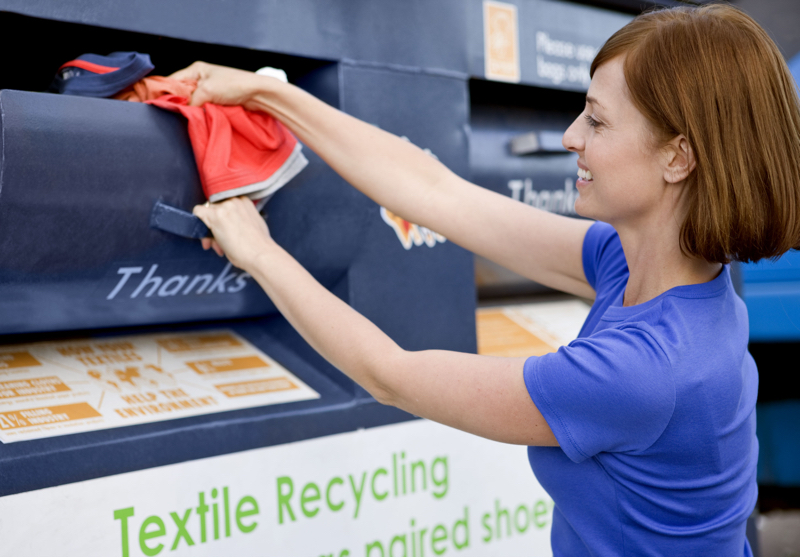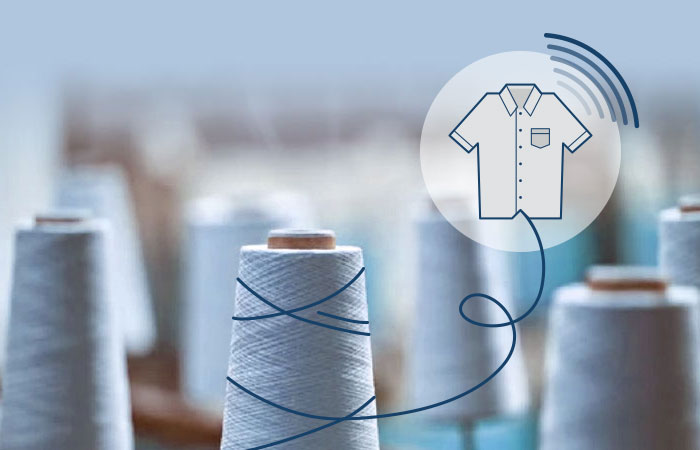Textile recycling is a sustainable solution for repurposing old clothes and reducing waste. By recycling textiles, we can decrease landfill waste and conserve resources, making it an eco-friendly option for the fashion industry and consumers.

Credit: www.ecotextile.com
The Importance Of Textile Recycling
Textile recycling plays a vital role in promoting sustainability and reducing the environmental impact of the fashion industry. With the growing awareness of the negative effects of fast fashion and the need to transition to a circular economy, textile recycling has gained significant importance.
Reducing Waste
Textile recycling helps reduce the amount of waste that goes into landfills. Every year, vast quantities of clothing and textiles end up in the trash, contributing to the global waste crisis. Recycling textiles not only prevents these items from occupying valuable landfill space but also reduces the need for new raw materials, making it an efficient waste management solution.
Conserving Resources
By recycling textiles, we can conserve valuable resources such as water, energy, and raw materials. The production of new textiles requires substantial amounts of water and energy, and our planet's resources are finite. Recycling textiles reduces the demand for these resources, contributing to the conservation of water, reducing carbon emissions, and minimizing the depletion of natural resources.
Moreover, recycling textiles also helps save raw materials like cotton, wool, and polyester, which are derived from natural resources and typically require energy-intensive processes to transform them into usable textiles.
The Process Of Textile Recycling
Textile recycling is a crucial aspect of sustainable fashion and environmental conservation. By giving a new lease of life to discarded clothing and fabrics, it reduces waste and lessens the environmental impact of textile production. The process of textile recycling involves several stages, such as collection and sorting, mechanical recycling, and chemical recycling. Each step plays a vital role in ensuring the efficient and eco-friendly transformation of old textiles into new materials.
In the collection and sorting stage, the first step is to collect unwanted textiles from various sources, including households, clothing banks, and retailers. These textiles can range from clothes, shoes, and accessories to home furnishings. Once collected, the textiles are carefully sorted based on their material composition, color, and quality. Sorting enables the separation of different types of textiles and facilitates the subsequent recycling processes. High-quality items that are still in good condition may be resold or donated to those in need, while damaged or unsuitable textiles are set aside for recycling.
Mechanical recycling is a common method used to recycle textiles. It involves shredding the sorted textiles into small pieces or fibers. The shredded material is then cleaned to remove any contaminants such as buttons, zippers, or dirt. After the cleaning process, the textile fibers are further processed to remove any remaining impurities. These fibers can be transformed into reusable materials through various techniques, including carding, spinning, and weaving. The resulting recycled fibers can be used to create new textiles or blended with other materials to enhance their properties.
Chemical recycling is another method employed in the textile recycling process. It involves breaking down the old textiles into their individual components, such as cellulose, polyester, or other fibers. This is typically achieved through chemical processes, such as hydrolysis or solvolysis. By dissolving the textiles in specific solvents, the individual fibers can be extracted and purified. These purified fibers can then be used to create new textiles or converted into various chemical compounds for other applications.
Both mechanical and chemical recycling methods have their benefits and drawbacks. Mechanical recycling is a more straightforward and widely-used technique, suitable for recycling textiles with minimal chemical treatments. On the other hand, chemical recycling offers the potential to recover a wider range of fibers and provides a more extensive scope for recycling blended materials. Depending on the condition and composition of the textiles, the most suitable recycling method can be chosen to maximize resource efficiency and minimize environmental impact.
Benefits Of Textile Recycling
Textile recycling offers numerous benefits to promote sustainability in the fashion industry. It reduces landfill waste, conserves resources, and minimizes the environmental impact of textile production. By recycling textiles, we can foster a more sustainable and eco-friendly future.
Textile recycling is a sustainable practice that offers numerous benefits to the environment and the economy. By diverting textile waste from landfills and implementing recycling processes, we can contribute to a cleaner planet and create valuable economic opportunities. Let's explore the various advantages of textile recycling.
Environmental Impact
Textile recycling has a positive environmental impact as it helps reduce the carbon footprint associated with textile production. The process of manufacturing new textiles contributes to greenhouse gas emissions, water pollution, and the depletion of natural resources. However, by recycling textiles, we can significantly decrease these negative environmental effects.
Recycling textiles conserves energy that would otherwise be needed to extract raw materials and produce new clothing and fabrics. According to the U.S. Environmental Protection Agency, recycling one ton of textiles can save 5,774 kWh of electricity, 9 cubic yards of landfill space, and 17 trees.
The amount of waste generated by the textile industry is staggering. By recycling textiles, we can reduce the volume of waste in landfills and prevent the release of harmful chemicals into the soil and water. Textile waste often contains toxic substances and dyes, which can contaminate natural resources if not properly disposed of or recycled.
Economic Opportunities
Textile recycling also offers significant economic opportunities for individuals, businesses, and communities. It creates a market for recycled textiles and encourages the development of a circular economy where materials are reused and repurposed, rather than discarded.
Recycling textiles creates jobs across the entire supply chain, from collection and sorting to processing and manufacturing. These jobs contribute to local economies and strengthen communities, while also promoting sustainable employment practices.
Moreover, textile recycling can lower production costs for businesses by reducing the need for new raw materials. By incorporating recycled textiles into their products, companies can save on material expenses while still producing high-quality items.
Finally, the reusable value of textiles is preserved through recycling. Instead of being wasted or discarded, textiles can find a second life and be transformed into new products. This extends the lifespan of textiles and maximizes their value, leading to a more efficient and sustainable use of resources.

Credit: www.umass.edu
Challenges In Textile Recycling
Textile recycling plays a crucial role in promoting sustainability by reducing waste and conserving resources. However, there are several challenges that hinder the effective implementation of textile recycling practices. These challenges include contamination, lack of awareness, and technological limitations. Addressing these challenges is essential to maximize the potential of textile recycling and create a more sustainable future.
Contamination
Contamination poses a significant challenge in textile recycling. It refers to the presence of foreign materials in textile waste, such as zippers, buttons, and other non-textile components. These contaminants can complicate the recycling process, increase costs, and reduce the quality of the recycled textile. Additionally, contaminated textile waste can lead to equipment damage and production delays.
Lack Of Awareness
The lack of awareness among consumers about textile recycling is another obstacle. Many people remain unaware of the importance and benefits of recycling textiles, resulting in a significant amount of textile waste ending up in landfills. Without proper education and awareness, individuals may not take the necessary steps to separate their textile waste for recycling or seek out recycling facilities.
Technological Limitations
Technological limitations are also a major challenge in textile recycling. While there have been advancements in recycling technologies, there are still limitations in processing certain types of textiles. Fabrics with complex blends or those containing non-recyclable materials can be difficult to recycle efficiently. This limitation restricts the range of textiles that can be effectively recycled and leads to a higher percentage of textile waste that cannot be processed.
Innovations In Textile Recycling
Innovations in textile recycling have been playing a crucial role in promoting sustainability in the fashion industry. From upcycling and repurposing to circular economy initiatives, various methods have emerged to reduce textile waste and minimize the environmental impact of the fashion industry.
Upcycling And Repurposing
Upcycling and repurposing techniques have gained popularity as innovative ways to give new life to textile waste. Instead of discarding old or unwanted garments, they are transformed into new and unique products with added value. This not only reduces the amount of textile waste sent to landfills but also conserves resources that would have been used to produce new textiles. Old t-shirts can be transformed into tote bags, denim jeans can become fashionable skirts, and worn-out fabrics can be turned into decorative pillows. By encouraging creativity and resourcefulness, upcycling and repurposing contribute to a more sustainable textile industry.
Circular Economy Initiatives
In line with the principles of the circular economy, initiatives in textile recycling aim to close the loop by minimizing waste and maximizing resource efficiency. These initiatives focus on creating a system where materials and products are reused, repaired, or recycled at the end of their life cycle, rather than being disposed of as waste. For example, some companies have implemented take-back programs, allowing customers to return used clothing for recycling or repurposing. Others use innovative technologies to separate and process textile fibers to create new materials. By embracing circular economy initiatives, the textile industry can promote a more sustainable and environmentally friendly approach to production and consumption.

Credit: www.impinj.com
Frequently Asked Questions On Textile Recycling Sustainability
Is Recycling Fabric Sustainable?
Recycling fabric is a sustainable practice that helps reduce waste and conserve resources. It minimizes the environmental impact of textile production and decreases the need for virgin materials. Reusing and repurposing fabric also has social benefits, such as creating job opportunities and supporting local economies.
How Does Recycling Textiles Help The Environment?
Recycling textiles helps the environment by reducing landfill waste and conserving natural resources. It decreases the need for new textile production, saving energy and water. Recycling also reduces the pollution from manufacturing processes and helps minimize greenhouse gas emissions, contributing to a healthier planet.
What Impact Does Textile Waste Have On Environmental Sustainability?
Textile waste negatively impacts environmental sustainability by polluting water, emitting greenhouse gases, and degrading ecosystems. It also leads to resource depletion and landfill overcrowding. Proper waste management, recycling, and adopting sustainable practices are crucial for minimizing these harmful effects.
What Are The 3rs In Sustainable Textiles?
The 3Rs in sustainable textiles are Reduce, Reuse, and Recycle. These principles aim to minimize waste and promote a more environmentally friendly approach to textile production and consumption. By reducing, reusing, and recycling textiles, we can contribute to a more sustainable and circular fashion industry.
Conclusion
Textile recycling is a vital approach to achieving sustainability in the fashion and textile industry. By repurposing and reusing materials, we can significantly reduce waste and the environmental impact of clothing production. It is essential for individuals, brands, and governments to prioritize and support this sustainable solution for a greener future.
Together, we can make a difference in preserving our planet's resources and embracing a circular economy.
Comments
Post a Comment